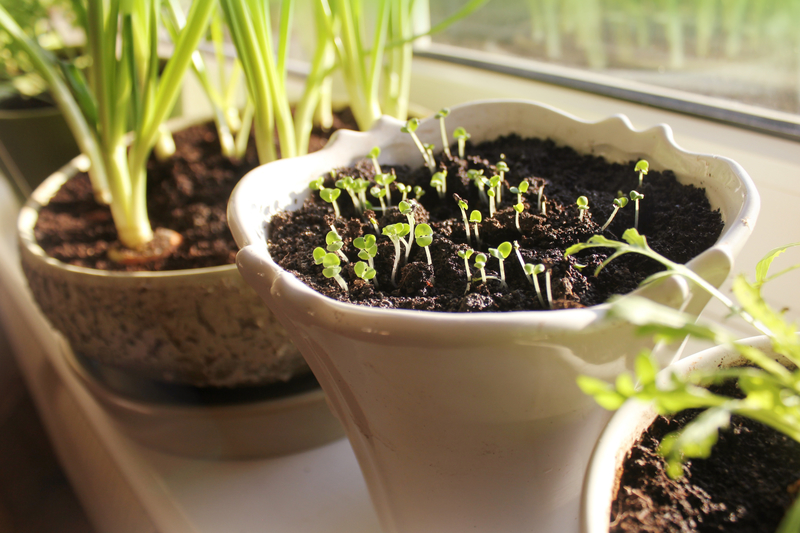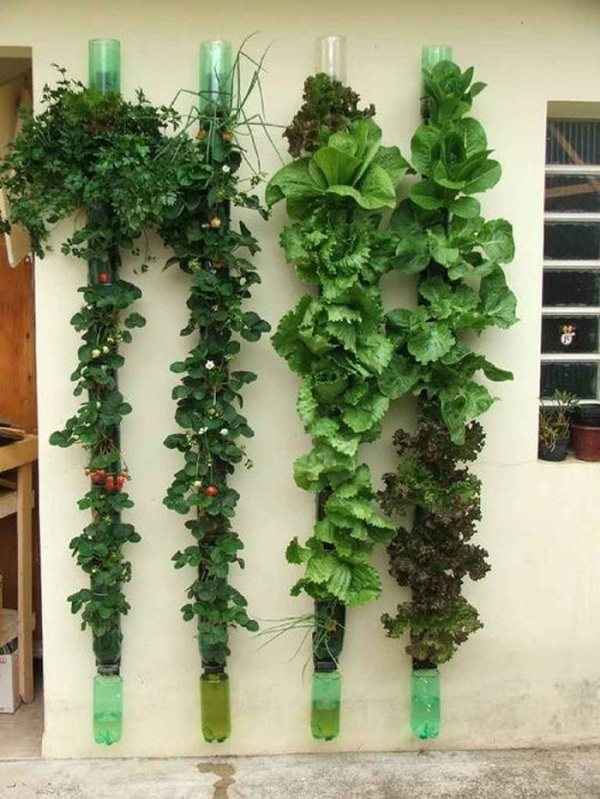It doesn't take a painful amount of money to jumpstart your survival garden. You can recycle many materials you use on a daily basis like coffee cans, soup cans and water jugs. You can even make your own sterilized soil in the comfort of your own kitchen. This survival garden will cross items off your survival-prep list and get you started on a stockpile!
Digging Up Dirt
We may want to sterilize soil that’s coming from outside to do up some pots.
We can add equal parts water and boil it for 10-30 minutes, or process it in jars in water-bath or pressure canners as we would tomato paste or meat. We can also bake it (350 degrees for 60 minutes, or 450 degrees for 30 minutes). Or, we can make sure it’s damp and then microwave it for 5-10 minutes.
We want to skip soil that may have been treated with a broadleaf herbicide, because most of our veggies are dicots.
Dicots – broadleaf plants; non-grasses (hay, corn, wheat and other grains are monocots).
Cheating the Calendar
We can start planting with our non-buggy soil right away, even if we live indoors with no windows, or if it’s going to be June before it’s sa
Using just the ambient light from winter and early spring windows, some or many plants grow a little slower, but even doubling a microgreen, radish, or leaf lettuce that takes 14, 21, or 30 days means we’re munching in as little as 4-6 weeks, as much as 60 days in cool, very dim conditions indoors.
Any full-spectrum light bulb can go in any lamp in the home – we don’t have to get fancy there.
Early Transplants
You fill a shallow container 12-24” long with soil, plant out pea seed at high density, and then just slide the whole thing out when the seedlings and weather are cooperating.
The same can also be done for strawberries, spinach and baby lettuces.
A few leaves are sacrificed to salad, keeping it from producing a tuber. The seedlings are transitioned outside in stages, then the soil is slid out and into a bed. With the leaves less disturbed or undisturbed, the plant starts gaining enough growth to make that tuber for us.
Pots for Planting
Most of us use or can gain access to tins from canned foods, soda and juice bottles, milk jugs, and coffee cans (plastic or steel).
Any plant that’s a candidate for soup cans (green onions, leaf lettuce, baby spinach, chickweed) is also a candidate for peanut jars and cashew tubs, peanut butter tubs, and bottles from bulk vegetable or olive oil.
A few holes for drainage in the sides and-or bottoms, and we’re in business.
We can also line baskets of various types, or collect pretty lampshades to flip upside down and line, then add a fill like pinecones at the bottom for drainage and air space, and be very, very careful watering for the rest of the season.
Seed Selection
You snip the tips or tops, or select-harvest larger leaves, but leave the plant growing; with the established root system and-or leaves still collecting sunlight, plants regrow faster than reseeding.
I’m also mostly going to stick with plants that have low light needs.
Using things like coffee grounds we get from Starbucks, McD’s, or our own pots, and tea leaves, we can keep even very small containers and “pots” fertile a pinch or two at a time, right on the surface of the soil to be watered in as we go.
A pinch or so of Epsom salt here and there will also keep our plants productive and flowering.
Baby beet leaves are commonly included in field green mixes. Sprinkle or space at a half-inch, thin and eat the smaller sprouts to give a 1-1.5” spacing, and they’ll be fine.
Radishes, baby carrots, and even small beets or turnips for roots won’t work well in soup and small veggie cans – they just aren’t all that productive for the space used.
Herbs go fifty-fifty. Some will stay smaller when grown in 20-oz., cans, and 2L jugs, but most will be fine.
Mustards are salad add-in’s at our house, but can be grown larger and in more bulk for people who dig cooked greens.
Pea sprouts and shoots are an excellent spinach replacement.
Strawberries are happy with half a 2L, milk jugs, wider bean/fruit cans, and coffee cans & tubs.
Dandelion and plantain aren’t overly space efficient for small containers, but chickweed is fantastic, I love henbit.
Spring into Sowing
We’re not going to feed ourselves off the contents of even a couple dozen small containers (or for that matter, 5-gallon buckets). However, it’s a good way to plan for disaster. Most of those cool-season, small-space, low-light herbs and greens are jam-packed with vitamins that can round out diets heavy in beans and rice or lentils and wheat.
Have you created your own survival garden? Do you have any tips to increase its success and longevity?
Article and Photo Source: The Prepper Journal


